Thinkfree Office NEO: a low-cost MS Office with no frills
The name of the Korean office suite is unknown to most domestic users, but there are many reasons to learn more about it. If only because Thinkfree Office NEO works great with Microsoft Office files and PDF documents, it has a similar ribbon interface and at the same time costs half the price of American software.
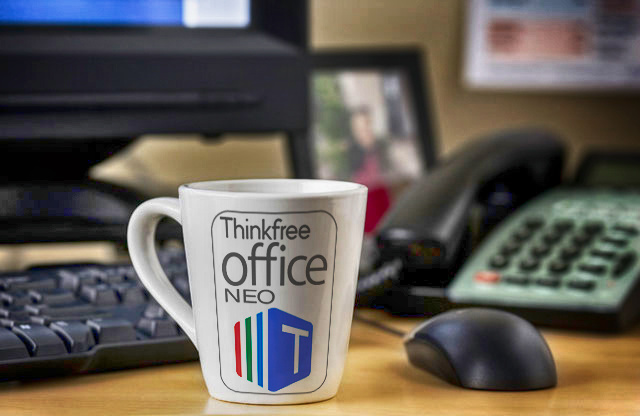
Despite the fact that there are quite a lot of office packages on the market (both paid and free), it is not easy for most companies to abandon the usual, but rather expensive, Microsoft Office. Perhaps there are several main problems that keep companies from changing office suites.
Other interface / need for employee training
While MS Office has been using the “ribbon” interface for many years now, most of the alternative packages still use outdated and much less visual drop-down menus. In order to find compliance with all the usual functions, you need to spend a lot of time and money on staff training.
Formats and compatibility
Alternative office suites offer their own format or the open, but still not widespread ODF as the main format for working with documents. Employees need to convert existing MS Office documents into other formats, which creates inconvenience when working both inside the company and exchanging information with partners. In addition, when converting, some data is lost, in particular, numbering, styles, and other design elements.
Insufficient functionality
Many programs contain only basic tools for working with text, spreadsheets and presentations. Therefore, the usual work can easily stall if you suddenly need to edit a PDF, add audio to a presentation, or copy the format of a cell in a table.
The Korean company Hancom is not yet well known to Russian users. However, in the homeland of this manufacturer of office applications know very well. Today, more than a quarter of the office software on the Korean market is Hancom products. From April of this year, an office package from Hancom is officially available in Russia. Koreans are optimistic and determined, and this is justified: their product really has a lot of strengths.

There is nothing superfluous in the Thinkfree Office NEO package, only three main applications:
The price of the Korean office suite is noticeably lower than the American counterpart. Thus, the version for home users in Russia costs 2490 rubles, that is, two times less than the MS Office Home and Student package, which is similar in terms of conditions. At the same time, like this package from Microsoft, ThinkFree Office programs are sold with a perpetual license. For many users, this is much more convenient than the currently popular subscriptions that constantly require renewal.

The interface of all applications is very similar to MS Office. There is the usual “ribbon” with tabs, which, however, can be easily hidden, thereby increasing the working area. Both tab names and a set of tools on each of them are as close as possible to those in MS Office.

Under the tape is an analogue of the quick access panel, to which the most popular commands are placed. You can also create custom panels with any convenient set of commands.

Koreans are well prepared to enter the Russian market, so the package is completely Russified. Most command names are similar in MS Office. Not only they have been translated, but also tooltips that explain the purpose of some functions. But the Thinkfree Office NEO help system is currently available only in English and only online.
The most important feature of the Thinkfree Office NEO is the excellent work with the usual MS Office formats. Documents created in Microsoft Word, Excel and PowerPoint open without error in similar applications of the Korean office. Then they can be edited and saved without any losses and conversions. In other words, if you are working with Thinkfree Office, then the partners to whom you send the files may not at all realize that you have abandoned Microsoft products.
In addition to MS Office documents, the Korean office suite also works with all other common formats: open ODF, text-based RTF files, web-based HTM / HTML documents, CSV data, etc. Separately, we should mention support for the popular PDF format. Editing such files directly will not work, but with the help of the built-in converter you can open the PDF for editing in one of the programs of the package, make the necessary edits, and then save it as a PDF again. By the way, you can save to PDF any other file that you work with in the Thinkfree Office.

It is unlikely that many of you have thought about how many functions are in their favorite office suite and what percentage of them is needed in everyday work. According to official information, about 1,350 out of 1,500 MS Word functions are implemented in the Korean text editor, that is, about 90%. And even a simple look at the tabbed ribbon is enough to understand: in Thinkfree Office you can find most of the software features from Microsoft.
Sample format, search and replace with a large number of parameters, an expanded clipboard with support for more than twenty data fragments, spell checking, translation using Systran service, footers, inserting a wide variety of data types (tables, images, page breaks, date and time) , page numbers, notes, bookmarks and hyperlinks) - all this is in the Korean office.

For working with large documents, you can use tools to add footnotes and create content. For the design of the text are used familiar to MS Office users styles, as well as WordArt objects, which here are called WordShop.
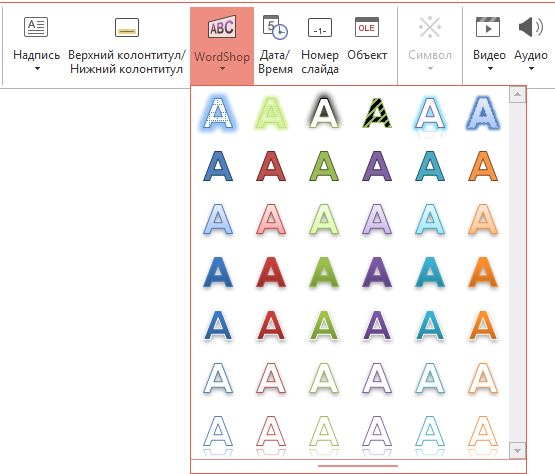
Cell users can find familiar tools in the program for formatting and automatic filling of cells, filtering and sorting data, conditional formatting, working with pivot tables, formulas and charts.

The program for creating presentations Show includes flexible settings for the slide show and the choice of themes for the presentation. Here you can find tools for inserting video (including from the Internet), recording sound, adding comments and others.
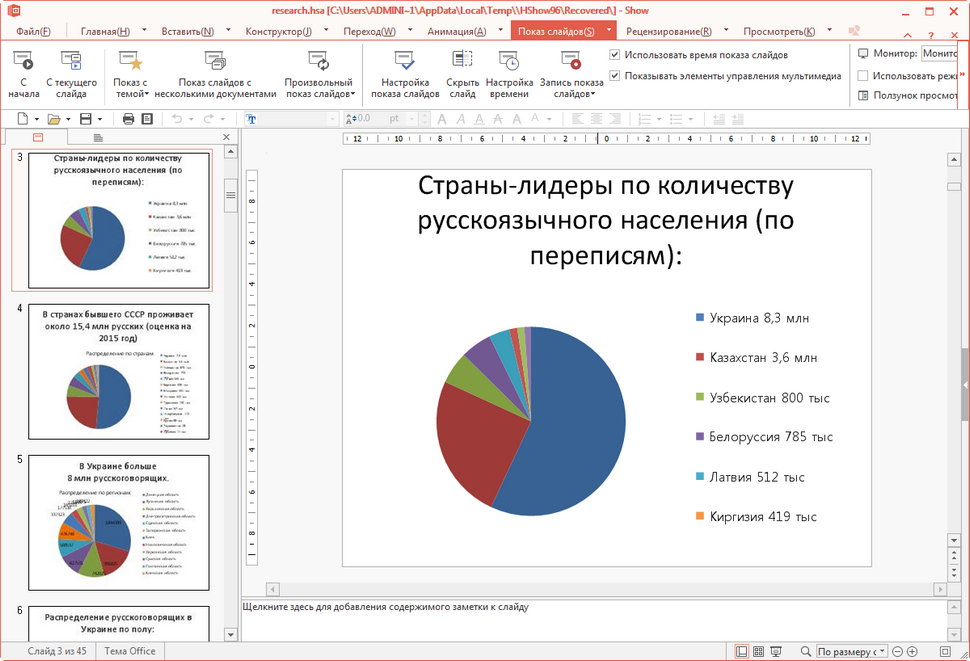
Collaboration tools are also as close as possible to those accustomed to users of Microsoft programs. You can work with the scan area, accept corrections one at a time or at once, view the document with corrections, source or final.

And one more important thing: Thinkfree Office has convenient tools for recovering documents in case of failure. If, say, the work of the system was completed incorrectly, then the next time the program is loaded, it will be possible to recover all the documents that were opened with all the changes in them.
Differences: what is missing
Despite the fact that Korean developers have diligently copied the main features of MS Office, yet something is missing in the Thinkfree Office. Some discrepancies can be found in the process of working with data. For example, there is no visual preview when choosing fonts and styles that users of the latest versions of MS Office are used to. Also, the pop-up menu with formatting tools is not available, there is no on-the-fly spelling, and the quick access panel can only be placed under the ribbon (and not above it, as in MS Office).
There is a translator and spelling checker in Thinkfree Office, but the less popular functions “Thesaurus” (search for synonyms) and “Directories” (built-in search engine) are not added. In addition, in Korean Word, only two viewing modes are available: in size and width of the page, and the reading modes, structure and web document are not added. Yes, two instead of five, but agree that these are the two most popular modes (we are sure that some of you never use the web document mode or the structure mode).
Bonuses: what is extra
Most potential users are interested, first of all, whether they will find familiar functions in an alternative program. We have already answered this question in the affirmative. However, the Koreans have provided their office with several features that it makes sense to consider not by comparison, but by themselves, since they have no analogues.
For example, in the Thinkfree Office programs you can find a tool that helps to hide personal information. It finds in the documents the numbers of credit cards, phone numbers, email addresses, IP addresses and, if necessary, automatically changes them to characters like XXXXXX. Changes are irreversible, if you save the document and close it, you will not be able to restore personal information.
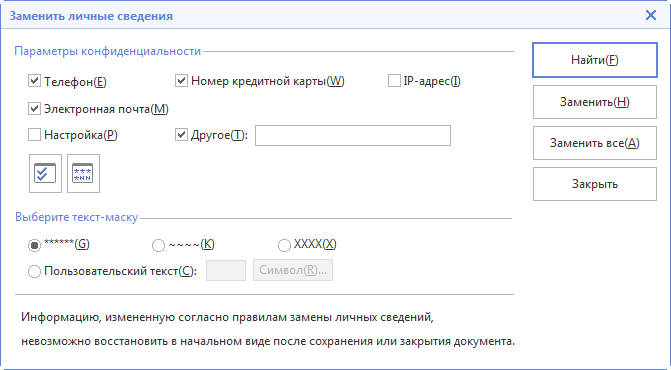
Another interesting feature of the Thinkfree Office is the ability to quickly post content on popular social networks such as Facebook and Twitter. It is enough to save your account information in the program and you can post messages without leaving the editor.

Korean development has integration with Netfice24's own online office: it’s enough to create an account and save documents to the “cloud” rather than to a local disk. You can also open files from a remote server and edit them directly from the program. This feature is interesting, first of all, because it is offered under a perpetual license (Microsoft also gives access to its OneDrive cloud only as part of the Office 365 package, which is distributed by subscription).

MS Office warns users downloading documents from the Internet about the insecurity of such a step, by default disabling the ability to edit such files. Thinkfree Office also takes care of security. All files that open in the programs of the package are tested with the built-in Malware Explorer tool, which informs users about possible threats. The level of protection can be controlled in the settings.
Finally, another interesting feature of Thinkfree Office is the preparation of text for 3D printing. A special tool is built into Korean Word, with which you can create three-dimensional text using any of the fonts supported by the program, make it bulky and add one of dozens of effects. The finished project can be saved in STL format.
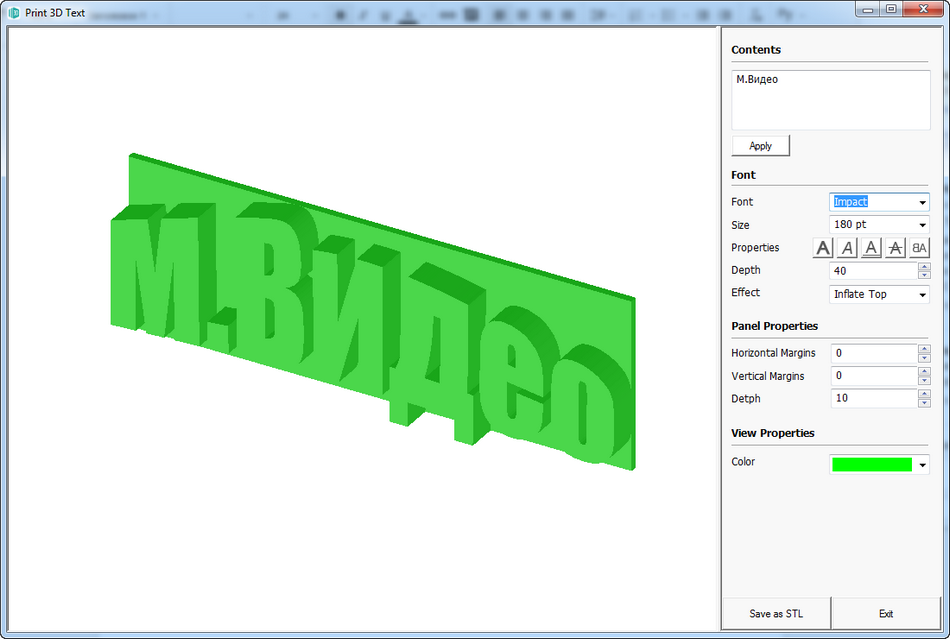
Koreans managed to get as close as possible to the “office benchmark” of Microsoft, while retaining in the Thinkfree Office all the popular functions for working with text and presentations in a familiar Russian-language interface. Support for MS Office formats and built-in protection and recovery of documents make Korean software a worthy alternative for solving office tasks. A much lower (compared to the American programs) price will brighten up some inconveniences associated with the truncated possibilities of the preview and the lack of permanent spell checking. In general, a practical solution with great potential.

What prevents to change office software
Despite the fact that there are quite a lot of office packages on the market (both paid and free), it is not easy for most companies to abandon the usual, but rather expensive, Microsoft Office. Perhaps there are several main problems that keep companies from changing office suites.
Other interface / need for employee training
While MS Office has been using the “ribbon” interface for many years now, most of the alternative packages still use outdated and much less visual drop-down menus. In order to find compliance with all the usual functions, you need to spend a lot of time and money on staff training.
Formats and compatibility
Alternative office suites offer their own format or the open, but still not widespread ODF as the main format for working with documents. Employees need to convert existing MS Office documents into other formats, which creates inconvenience when working both inside the company and exchanging information with partners. In addition, when converting, some data is lost, in particular, numbering, styles, and other design elements.
Insufficient functionality
Many programs contain only basic tools for working with text, spreadsheets and presentations. Therefore, the usual work can easily stall if you suddenly need to edit a PDF, add audio to a presentation, or copy the format of a cell in a table.
Thinkfree Office NEO: Tried at Home
The Korean company Hancom is not yet well known to Russian users. However, in the homeland of this manufacturer of office applications know very well. Today, more than a quarter of the office software on the Korean market is Hancom products. From April of this year, an office package from Hancom is officially available in Russia. Koreans are optimistic and determined, and this is justified: their product really has a lot of strengths.

License: inexpensive and forever
There is nothing superfluous in the Thinkfree Office NEO package, only three main applications:
- Word - text editor
- Cell - Spreadsheet Software
- Show - Presentation Tool
The price of the Korean office suite is noticeably lower than the American counterpart. Thus, the version for home users in Russia costs 2490 rubles, that is, two times less than the MS Office Home and Student package, which is similar in terms of conditions. At the same time, like this package from Microsoft, ThinkFree Office programs are sold with a perpetual license. For many users, this is much more convenient than the currently popular subscriptions that constantly require renewal.

Interface and localization: no need to get used
The interface of all applications is very similar to MS Office. There is the usual “ribbon” with tabs, which, however, can be easily hidden, thereby increasing the working area. Both tab names and a set of tools on each of them are as close as possible to those in MS Office.

Under the tape is an analogue of the quick access panel, to which the most popular commands are placed. You can also create custom panels with any convenient set of commands.

Koreans are well prepared to enter the Russian market, so the package is completely Russified. Most command names are similar in MS Office. Not only they have been translated, but also tooltips that explain the purpose of some functions. But the Thinkfree Office NEO help system is currently available only in English and only online.
Format support: no one will notice package spoofing
The most important feature of the Thinkfree Office NEO is the excellent work with the usual MS Office formats. Documents created in Microsoft Word, Excel and PowerPoint open without error in similar applications of the Korean office. Then they can be edited and saved without any losses and conversions. In other words, if you are working with Thinkfree Office, then the partners to whom you send the files may not at all realize that you have abandoned Microsoft products.
In addition to MS Office documents, the Korean office suite also works with all other common formats: open ODF, text-based RTF files, web-based HTM / HTML documents, CSV data, etc. Separately, we should mention support for the popular PDF format. Editing such files directly will not work, but with the help of the built-in converter you can open the PDF for editing in one of the programs of the package, make the necessary edits, and then save it as a PDF again. By the way, you can save to PDF any other file that you work with in the Thinkfree Office.

Functionality: almost everything you need
It is unlikely that many of you have thought about how many functions are in their favorite office suite and what percentage of them is needed in everyday work. According to official information, about 1,350 out of 1,500 MS Word functions are implemented in the Korean text editor, that is, about 90%. And even a simple look at the tabbed ribbon is enough to understand: in Thinkfree Office you can find most of the software features from Microsoft.
Sample format, search and replace with a large number of parameters, an expanded clipboard with support for more than twenty data fragments, spell checking, translation using Systran service, footers, inserting a wide variety of data types (tables, images, page breaks, date and time) , page numbers, notes, bookmarks and hyperlinks) - all this is in the Korean office.

For working with large documents, you can use tools to add footnotes and create content. For the design of the text are used familiar to MS Office users styles, as well as WordArt objects, which here are called WordShop.

Cell users can find familiar tools in the program for formatting and automatic filling of cells, filtering and sorting data, conditional formatting, working with pivot tables, formulas and charts.

The program for creating presentations Show includes flexible settings for the slide show and the choice of themes for the presentation. Here you can find tools for inserting video (including from the Internet), recording sound, adding comments and others.

Collaboration tools are also as close as possible to those accustomed to users of Microsoft programs. You can work with the scan area, accept corrections one at a time or at once, view the document with corrections, source or final.

And one more important thing: Thinkfree Office has convenient tools for recovering documents in case of failure. If, say, the work of the system was completed incorrectly, then the next time the program is loaded, it will be possible to recover all the documents that were opened with all the changes in them.
Differences: what is missing
Despite the fact that Korean developers have diligently copied the main features of MS Office, yet something is missing in the Thinkfree Office. Some discrepancies can be found in the process of working with data. For example, there is no visual preview when choosing fonts and styles that users of the latest versions of MS Office are used to. Also, the pop-up menu with formatting tools is not available, there is no on-the-fly spelling, and the quick access panel can only be placed under the ribbon (and not above it, as in MS Office).
There is a translator and spelling checker in Thinkfree Office, but the less popular functions “Thesaurus” (search for synonyms) and “Directories” (built-in search engine) are not added. In addition, in Korean Word, only two viewing modes are available: in size and width of the page, and the reading modes, structure and web document are not added. Yes, two instead of five, but agree that these are the two most popular modes (we are sure that some of you never use the web document mode or the structure mode).
Bonuses: what is extra
Most potential users are interested, first of all, whether they will find familiar functions in an alternative program. We have already answered this question in the affirmative. However, the Koreans have provided their office with several features that it makes sense to consider not by comparison, but by themselves, since they have no analogues.
For example, in the Thinkfree Office programs you can find a tool that helps to hide personal information. It finds in the documents the numbers of credit cards, phone numbers, email addresses, IP addresses and, if necessary, automatically changes them to characters like XXXXXX. Changes are irreversible, if you save the document and close it, you will not be able to restore personal information.

Another interesting feature of the Thinkfree Office is the ability to quickly post content on popular social networks such as Facebook and Twitter. It is enough to save your account information in the program and you can post messages without leaving the editor.

Korean development has integration with Netfice24's own online office: it’s enough to create an account and save documents to the “cloud” rather than to a local disk. You can also open files from a remote server and edit them directly from the program. This feature is interesting, first of all, because it is offered under a perpetual license (Microsoft also gives access to its OneDrive cloud only as part of the Office 365 package, which is distributed by subscription).

MS Office warns users downloading documents from the Internet about the insecurity of such a step, by default disabling the ability to edit such files. Thinkfree Office also takes care of security. All files that open in the programs of the package are tested with the built-in Malware Explorer tool, which informs users about possible threats. The level of protection can be controlled in the settings.
Finally, another interesting feature of Thinkfree Office is the preparation of text for 3D printing. A special tool is built into Korean Word, with which you can create three-dimensional text using any of the fonts supported by the program, make it bulky and add one of dozens of effects. The finished project can be saved in STL format.

Outcome: budget, practical, no frills
Koreans managed to get as close as possible to the “office benchmark” of Microsoft, while retaining in the Thinkfree Office all the popular functions for working with text and presentations in a familiar Russian-language interface. Support for MS Office formats and built-in protection and recovery of documents make Korean software a worthy alternative for solving office tasks. A much lower (compared to the American programs) price will brighten up some inconveniences associated with the truncated possibilities of the preview and the lack of permanent spell checking. In general, a practical solution with great potential.
All Articles